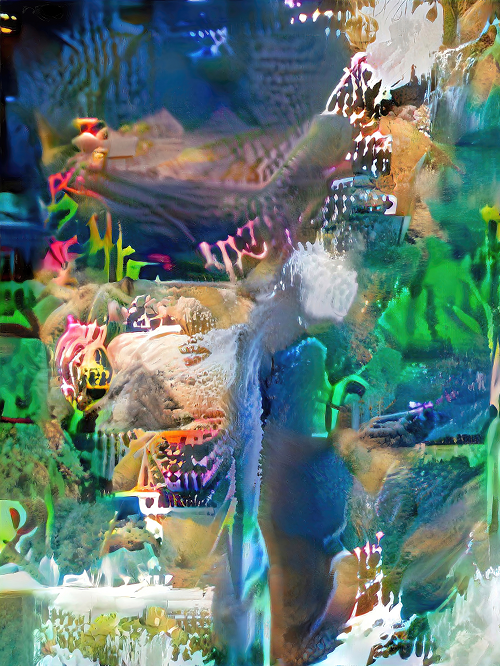Auckland Festival of Photography presents an exclusive showcase by Japanese artist, Taro Karibe as part of the 2024 Festival theme Believe [whakapono].
Artist, Taro Karibe makes this work by making an original photograph, revising it to remove details and then asking AI to re-imagine what the image is. The results are abstract, new distorted beauty of a human/AI collaboration.
"Just as the cracks and bumps on the walls of the Altamira caves were used to create paintings of bison, and the countless stars in the night sky were grouped into constellations by invisible lines, humans have had a desire to interpret and imagine things that are absent from sight since time immemorial. The human brain is caught up in an apophenia that looks for certain patterns and signs in a chaotic world, and each person lands upon a visual image like a mirage.
The theory of “Technium,” proposed by Kevin Kelly, founding editor-in-chief of WIRED and cyberculture commentator, sees the evolution of technology as an ecosystem of life. Referring to biologist Richard Dawkins’ assertion that “life wants to make eyes,” it naturally follows that AI, which we all now nurture and interact with, is beginning to organise its own brain structure. The algorithms of recognition—the procedures for seeing things—are defined by humans and, therefore, are not free from bias. Given that the human brain’s neural pathways serve as a model for AI development, it wouldn't seem unreasonable to compare the human and technological experience of seeing. My interest in this intersection of vision and technology led me to explore a cognitive psychological experiment using AI biases to make the machine’s eyes see illusions.
For my first experiment, I forced the receiver of an LCD TV to malfunction and then photographed the resulting glitches on the screen in real-time during programmes such as the news broadcast. I rotated and cropped the image data and input these context-shifted images into Photoshop, equipped with the AI—Adobe Sensei, to use as a kind of modern version of the cave wall to disturb the system’s image recognition and generation of landscape photography. Machine intelligence bugs when faced with meaningless and deviant information, forcibly recognising patterns and photo collages of real-life landscape features that have been machine-learnt, while ignoring linear perspectives and making up landscape pictures that have no feasible depth and perspective. It is as if a modern painter such as Caravaggio had combined disparate objects into a single picture, or if a chrysalis that had shed its sludgy body tissue to become a butterfly, creating a picture that reorganises the collective image of humanity.
At the dawn of the photographic age, the art of photography was coined the “The Pencil of Nature,” (consequently this is also the title of the world’s first commercial book to contain printed images) because it recorded everything it observed on a light-sensitive plate just as nature itself would have perceived it. AI’s image-recognition and generation system inherits photography’s technological lineage yet it cannot simply come to be called “The Pencil of Digital Nature.” As a cognitive entity that can understand and interpret what it sees, it has become the eyes of the computing group that enslaves the earth, depicting a camouflage of falsity and reality and enveloping us more acutely in its sphere.
The title and concept of this work were also inspired by the story of Orion’s death in Greek mythology. Artemis, the Greek goddess of the hunt, killed her beloved in a great misunderstanding. Jealous of Artemis’ love for the giant Orion, her brother Apollo one day points to the back of Orion’s head while he swims in the sea, telling her to “Shoot that rock and show me how good your bow is.” Thus deceived, Artemis shoots an arrow at the back of Orion’s head. The world is made up of many more copy/paste versions of tales than we assume. Misinterpretations can turn this world both cruel and rich; assumptions hurt people, and copy errors drive the evolution of art and biology. Originals and representations of people and tools accumulate, and misconceptions continue to link the constellations, even at this very moment."
Presentation on outdoor lightboxes, thanks to Auckland Council and the city centre targeted rate.
